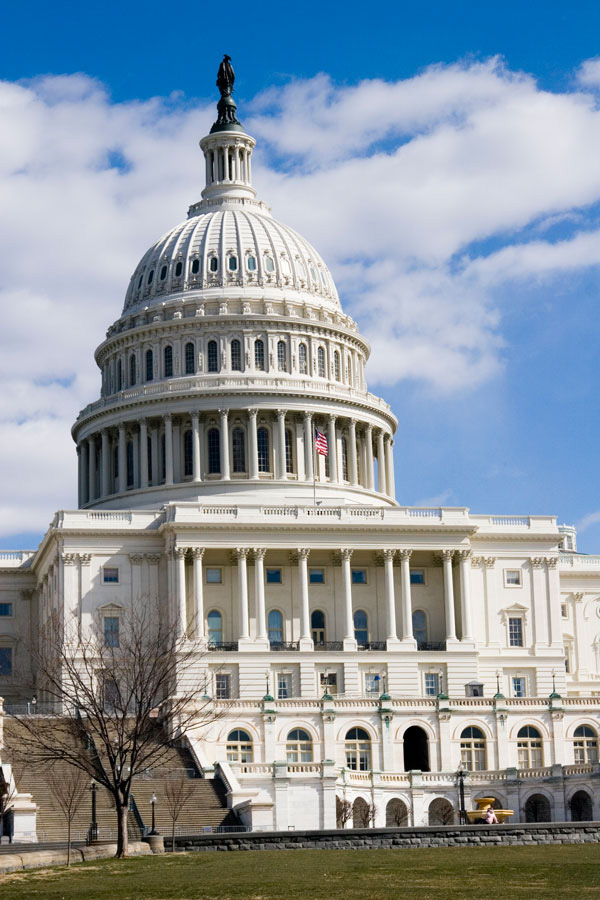Politics inevitably seep into U.S. beef industry
August 3, 2015

Politics permeates every aspect of our lives. So it’s inevitable that it seeps into the beef industry. One example is how politicians passed a country-of-origin labeling (COOL) law that has been disastrous for the North American livestock and meat industry. Now they are struggling to bring COOL into compliance with World Trade Organization (WTO) rulings against it. Another is USDA’s decision to allow imports of fresh beef from the Patagonia region of Argentina and 14 states in Brazil, despite producer concerns about the threat of foot-and-mouth disease (FMD) entering the U.S.
The House of Representatives acted with commendable speed in June by passing a measure to repeal COOL for beef, pork and poultry. Now the Senate must do this to bring the U.S. into compliance with its international trade obligations. Senators must act before Canada and Mexico start imposing up to $3.1 billion worth of retaliatory tariffs annually on a wide range of U.S. goods.
Yet at the time of writing, several key members of the Senate hadn’t grasped the fact that repeal is the only option left. Sen. Debbie Stabenow (D-Mich.), the ranking member of the Senate Ag Committee, in late June proposed a voluntary COOL program in place of mandatory COOL for beef and pork. Several other senators supported this move. What’s mystifying is that these senators refused to acknowledge that Canada and Mexico strongly oppose a voluntary program, and that they have 100% control over the outcome of this long-running saga. They have won four times at the WTO, which means any U.S. resolution has to meet their approval.

70+ photos showcasing all types of cattle nutrition
Readers share their favorite photos of cattle grazing or steers bellied up to the feedbunk. See reader favorite nutrition photos here.
Canada says its tariffs will target agricultural products produced in Michigan, such as beef, pork and apples, and in other states whose senators support mandatory COOL. Agriculture is Michigan’s second-largest industry, so Stabenow will likely have to agree to a repeal to avoid damage in her backyard. The clock is ticking. Canada and Mexico might start applying their tariffs as early as next month.
Then there’s FMD. USDA’s decision to allow fresh beef from South America to enter the U.S. brought a storm of protest from all cattle producers' groups, the only time they have agreed on anything. It didn’t deter USDA’s Animal and Plant Health Inspection Service (APHIS) from publishing a final rule to allow importation of chilled or frozen beef from the two regions. The National Cattlemen’s Beef Association (NCBA) immediately accused the Obama administration of allowing imports purely for political gain.
APHIS stipulated imports could only occur under specific conditions that mitigate the risk of FMD. APHIS risk assessments indicate that beef from those regions can be safely imported, provided certain conditions are met to ensure the beef will not harbor the FMD virus, it said. Its risk assessments also concluded Argentina and Brazil are able to comply with U.S. import certification requirements. NCBA, though, continues to criticize APHIS’ risk analysis, and said imports threaten the viability of the U.S. industry, as well as hundreds of thousands of American cattle-producing families.
In contrast, the North American Meat Institute (NAMI) welcomed APHIS’ decision. The decision reaffirms the U.S. position that human and animal health regulation of international trade must be based on sound scientific risk assessments, an approach that ultimately benefits the U.S. industry, said NAMI President and CEO Barry Carpenter.
Fresh beef might not leave Patagonia or Brazil for several months, after USDA has carried out plant and food safety inspections. Then imports will be only a trickle, as Brazil has no tariff-free beef quota of its own. Such small volumes will ideally allow all the meat to be thoroughly inspected, and allay lingering concerns about FMD entering as well.
Steve Kay is editor and publisher of Cattle Buyers Weekly (cattlebuyersweekly.com). See his weekly cattle market roundup each Friday afternoon at beefmagazine.com.
You might also like:
7 tools to win the war against cattle flies
5 foundational ideas for a successful ranch
7 U.S. cattle operations that top the charts for their stewardship efforts
9 tips for preventing pasture bloat in cattle
Cows Out On Pasture | 80+ grazing photos from readers
5 tips for minimizing heat stress in cattle
60+ stunning photos that showcase ranch work ethics
About the Author(s)
You May Also Like




.png?width=300&auto=webp&quality=80&disable=upscale)
